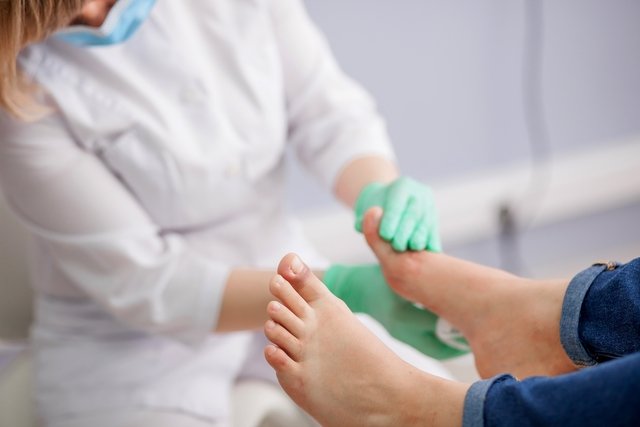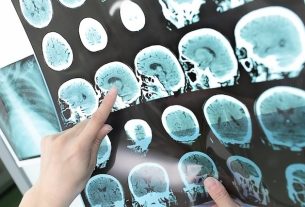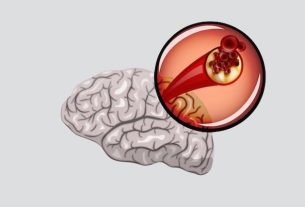Necrosis is a situation where cells in the body’s tissues die, which may arise due to a lack of oxygen or low blood circulation, such as what happens in cases of stroke, infections, electric shock or wounds, for example.
Symptoms of necrosis vary according to the cause and location of this condition, and may include fever, joint pain, increased heart rate, heat and the presence of foul-smelling liquid in the wounds.
Necrosis must always be evaluated by a doctor so that the diagnosis can be made and the most appropriate treatment can be indicated, which may include the use of antibiotics, surgery and debridement, a procedure that removes dead and infected tissue from wounds, preventing the infection spreads to other areas of the body.

Main symptoms
Symptoms of necrosis vary depending on the type and location of the condition, and may include:
- Chest pain;
- Coughing up blood or mucus;
- Fever;
- Hard, red lumps under the skin;
- Swelling of the affected region;
- Increases in heart rate;
- Low pressure;
- Liquid retention;
- Nausea and vomiting;
- Joint pain;
- Small volumes of urine;
- Presence of foul-smelling pus in wounds.
Furthermore, necrosis can also cause tiredness, mental confusion, loss of appetite and weight.
Types of necrosis
The types of necrosis vary according to the cause and location of the injury:
1. Cheese necrosis
This type of necrosis can appear in cases of infections caused by bacteria or fungi, as occurs in tuberculosis, syphilis and histoplasmosis, which is an infection caused by fungi transmitted mainly by pigeons and bats. Learn more about histoplasmosis.
2. Coagulation necrosis
Coagulation necrosis occurs when blood circulation to cells decreases, and can appear in any part of the body, except the brain, and is caused by conditions such as atherosclerosis, heart attack, hernias, tumors and blood clots.
3. Liquefactive necrosis
In this type of necrosis, damaged cells lose their structure, becoming liquid and forming pus.
Liquefactive necrosis occurs mainly in the brain and spinal cord and can be caused by bacteria, fungi, viruses or parasites. Additionally, liquefactive necrosis can also be caused by a stroke, causing tissue death in the brain.
4. Pulp necrosis
Pulp necrosis happens when the pulp cells, or flesh, inside the tooth die. This type of necrosis can be caused by situations such as cavities, cracked teeth, poorly performed procedures, trauma or wear of tooth enamel.
5. Gangrenous necrosis
Gangrenous necrosis, known as gangrene, can arise due to a lack of oxygenation in cells or caused by a bacterial infection, affecting mainly the skin, lungs and intestine. Learn more about gangrenous necrosis.
This type of necrosis is classified as dry gangrene, which causes the loss of water in the extremities of the body, leaving the tissues dark and dark in color; wet, when cells are damaged by bacteria, rotting and softening tissues; and gaseous, caused by bacteria that damage muscles, releasing gases into the body.
6. Fat necrosis
In this type of necrosis, the death of adipose tissue occurs due to an injury or loss of blood circulation, which may be caused by trauma or surgery complications. Fat necrosis can occur mainly in people with breasts, people over 50 years of age or those who have undergone fat graft surgery in their breasts.
7. Fibrinoid necrosis
This type of necrosis occurs inside the blood vessels and may arise as a consequence of a disease or be caused by viral or bacterial infections.
8. Acute tubular necrosis
Acute tubular necrosis is a condition that causes a lack of oxygen and low blood flow to the kidneys, damaging them. This type of necrosis can be caused by situations such as stroke and heart attack, or by the use of contrast, anesthetics or antibiotics.
How the diagnosis is made
Necrosis must be diagnosed by a general practitioner who will evaluate the signs and symptoms presented and the person’s health history.
Taking care of your health has never been easier!
In addition, the doctor may also order some tests to complement the diagnosis, including a complete blood count, blood culture, urinalysis and urine culture. Imaging tests, such as computed tomography, venous doppler and ultrasound, may also be indicated.
Possible causes
The main causes of necrosis are:
- Infection caused by bacteria, fungi, viruses or parasites;
- Traumas, such as car accidents and electric shocks;
- Medical or aesthetic surgical procedures;
- Biopsy;
- Radiation treatments;
- Cavities, trauma or cracks in teeth;
- Poorly performed dental procedures;
- Heart attack, atherosclerosis or stroke.
Furthermore, other possible causes of necrosis are hernias, tumor, liver disease or the use of contrast, anesthesia or antibiotics.
Difference Between Necrosis and Apoptosis
Apoptosis is a healthy and normal process in which defective and purposeless cells die to balance the body’s functions and health. Apoptosis rarely needs to be treated.
In necrosis, cell death is caused by diseases, infections and other conditions that cause damage, preventing the cells from functioning properly. Necrosis often needs to be treated due to the risk of complications such as sepsis, an exaggerated response of the body to an infection, altering the body’s normal functions. Learn more about sepsis.
How the treatment is carried out
The treatment of necrosis must be recommended by a doctor and varies depending on the cause of this condition, as indicated below:
- Liquefactive necrosis, cheesy and gangrenous: the doctor usually recommends the use of antibiotics. In addition, pus drainage, amputation and debridement may also be indicated;
- Acute tubular necrosis: the use of diuretic medications and to control potassium in the body may be indicated. Additionally, dialysis may also be recommended;
- Coagulation necrosis: treatment aims to prevent complications and improve organ functions, and medications may be indicated to control blood pressure, lower cholesterol and prevent clots;
- Fat necrosis: Generally, the recommended treatment includes aspiration to drain the nodules, needle or cut biopsy;
- Pulp necrosis: Treatment is usually done with the use of antibiotics or root canal treatment, which is a procedure in which the dentist cleans and disinfects the canals inside the tooth root, removing its pulp. In more serious cases where root canal treatment is not indicated, tooth extraction must be performed.
In addition, the doctor may also recommend some lifestyle changes, such as controlling diabetes, maintaining a healthy diet, reducing stress, maintaining an adequate weight and stopping smoking.
Possible complications
Complications of necrosis vary depending on the type and location of this condition, and generally arise when left untreated.
Possible complications of necrosis may include Ludwig’s angina, which is an infection in the tissues under the tongue and neck; osteomyelitis, an infection and inflammation of the jaw bones; or sepsis, a serious condition where the body overreacts to an infection, altering the body’s normal functions.

Sign up for our newsletter and stay up to date with exclusive news
that can transform your routine!
Warning: Undefined array key "title" in /home/storelat/public_html/wp-content/plugins/link-whisper-premium/templates/frontend/related-posts.php on line 12
Warning: Undefined array key "title_tag" in /home/storelat/public_html/wp-content/plugins/link-whisper-premium/templates/frontend/related-posts.php on line 13



